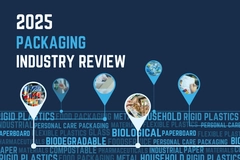Japanese scientists develop plastic that disappears in the ocean

Researchers at the Riken Center for Emergent Matter Science (CEMS) in Japan have created a biodegradable plastic material applicable to packaging that naturally decomposes in seawater. The study aims to introduce an alternative to conventional plastic that maintains the strength and versatility of standard solutions while eliminating their long-term environmental footprint.
Existing biodegradable plastics like polylactic acid (PLA) fail to degrade in seawater because they are water insoluble. These tiny plastic fragments, measuring less than 5 mm, enter the food chain, endangering aquatic life and human health.
The research looked into the potential of supramolecular plastics, polymers held together by reversible interactions. The study, published in Science, detailed the experimental finding of this new plastic with cross-linked salt bridge structures that make it strong yet degradable in seawater.
Takuzo Aida, group director at the Riken CEMS and the lead researcher of this study, tells Packaging Insights: “The reaction to construct supramolecular polymers (plastics) is reversible. This possibly makes the supramolecular polymers mechanically weak. While this nature of the bonds in supramolecular plastics has been thought to make them unstable, our new materials are just the opposite.”
“Although we need a little more work to elaborate the properties of our plastic materials, I think packaging use is one of the possible applications.”
Enhanced material properties
The researchers combined two kinds of ionic monomers: sodium hexametaphosphate, a common food additive, and guanidinium ion-based monomers. These monomers can be metabolized by bacteria.
 The new material can serve multiple functions and does not generate microplastics (Image credit: Riken).“In the process of making supramolecular polymers, we mix two ionic monomers to cross-link. In this process, we discovered the occurrence of ‘liquid-liquid phase separation,’ which spontaneously separated the produced polymer and the counter ions of the precursor monomers (salt),” explains Aida.
The new material can serve multiple functions and does not generate microplastics (Image credit: Riken).“In the process of making supramolecular polymers, we mix two ionic monomers to cross-link. In this process, we discovered the occurrence of ‘liquid-liquid phase separation,’ which spontaneously separated the produced polymer and the counter ions of the precursor monomers (salt),” explains Aida.
“This phase separation makes the polymer-forming reaction irreversible and considerably enhances the mechanical properties of our plastic, but makes it dissociable back into the starting metabolizable monomers when exposed to salt. We were lucky to find this spontaneous phase separation process.”
In addition to being ocean-degradable, the new plastic is non-toxic and non-flammable, eliminating the risk of CO2 emissions during disposal. It can also be reshaped at temperatures above 120 degrees Celsius , similar to other thermoplastics.
Versatile alternatives
By testing different types of guanidinium sulfates, Aida and his team created plastics of varying hardness and tensile strengths, all comparable to conventional plastics, according to the researchers. Moreover, researchers developed similar ocean-degradable plastics using polysaccharides. The material can be used in 3D printing as well as medical or health-related applications.
When discussing the exposure of materials to moisture or humid environments, Aida explains that the sensitivity of plastics to these conditions depends on their monomer structure. “If you choose monomers with a less hydrophilic nature, the water or humidity sensitivity of our plastics is much less. If you indeed want to use the new plastics in water, including seawater, hydrophobic surface coating works.”
Beyond its biodegradability, the new plastic is recyclable. After dissolving in salt water, researchers recovered 91% of the hexametaphosphate and 82% of the guanidinium monomer in powder form.
In soil environments, sheets of the material fully degraded within ten days, enriching the soil with phosphorus and nitrogen — similar to a natural fertilizer.











